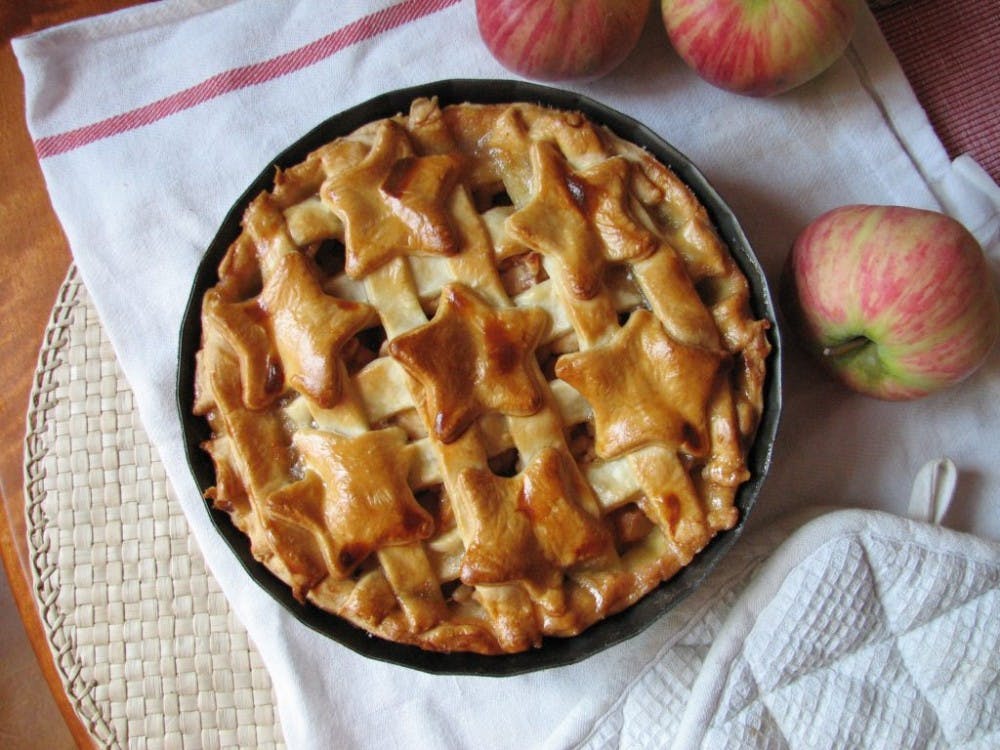If that isn’t cool, what is? So let’s break it down, where did the apple pie come from?
Pies did not quite start out as we know them today. The American Pie Council (bet you didn’t know that was a thing), says that pies first originated in Ancient Egypt and were spread to the rest of Europe by the Romans. These “pies,” however, had crusts that were made mainly to hold a filling rather than to actually be eaten and were referred to as “coffyns” (and later, coffins). These crusts were sometimes even made with birds so that the legs, which would hang over the side of the pie, could be used as a handle, suggesting someone had a morbid sense of ingenuity.
Even the apples used in apple pies are not native to America. Instead their ancestors come from central Asia and the Middle East, having undergone selective breeding almost 4000 years ago by bears, birds and bees. Though we did have crab apples, which were mostly used for cider-making as they were hard and bitter-tasting. So really our history with apples is just a misunderstood love story between early pioneers and alcohol.
So how did pie become an American phenomenon? In an effort to distance ourselves from English food traditions like an angry child trying to prove they’re different from their parents, we started making pies with edible crust.
So, sometime at the end of the 18th century, with the help of the apple preserving techniques brought over by Dutch immigrants and the (actually edible) flaky, pastry crust brought over by German immigrants, the American apple pie was born. A recipe for it even appeared in the very first American cookbook “American Cookery,” which was published in 1796.
From this point onwards apple pie would become a staple to the American people, often appearing as a side dish or even served with cheese as a main course. People would eat pie for multiple meals and multiple times a week, until one man dared to argue that we limit our pie consumption to only twice a week. This in turn sparked the passionate defence of apple pie by a New York Times editor who argued:
“Pie is the American synonym of prosperity, and its varying contents the calendar of the changing of seasons. Pie is the food of the heroic. No pie-eating people can be permanently vanquished.”
This was truly one of the most moving pieces I have ever read about a food product.
I like to believe it is the reporter’s words alone that moved pie into the foreground of symbols for American patriotism. However, World War II helped a bit as soldiers claimed they were fighting for “mom and apple pie.” From there it was impossible to go back, since pie was forever cemented as an American staple.
Despite not being any more American than any other type of wheat-based food product, apple pie has somehow become a symbol of American culture and patriotism despite its heavy reliance on immigration and the importation of cultures and ideas.
Perhaps though, this is a fitting symbol for America, or at least I would like it to be. So if you ever meet anyone whose nationalism perhaps gets the best of their common sense, treat ’em to a slice of good ol’ American pie and remind them that we have always been a country of immigrants, and we got pie out of that.

















Please note All comments are eligible for publication in The News-Letter.